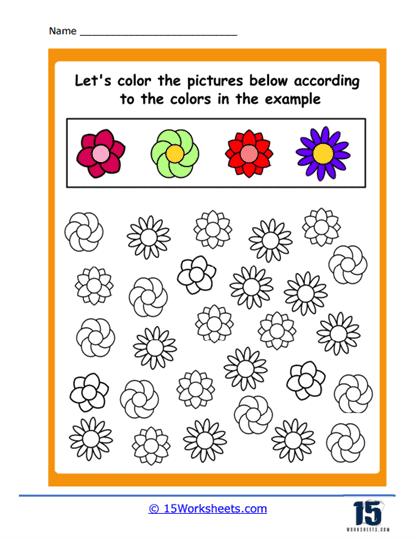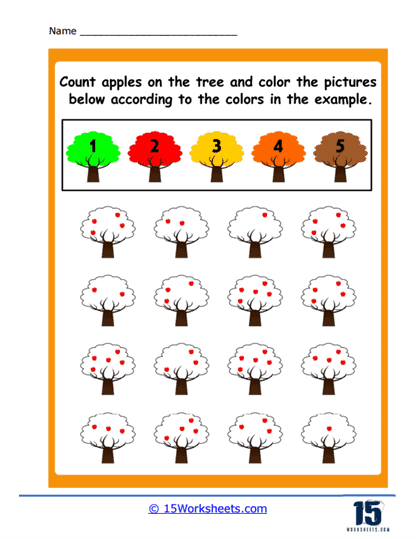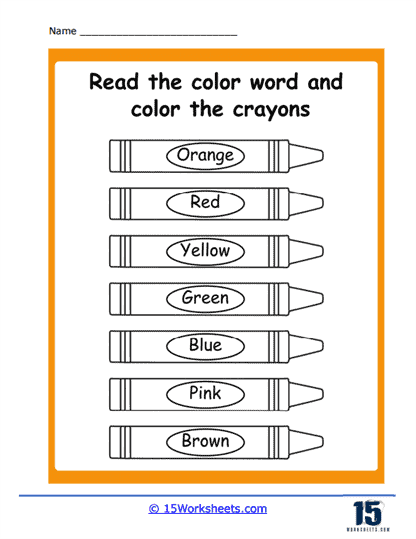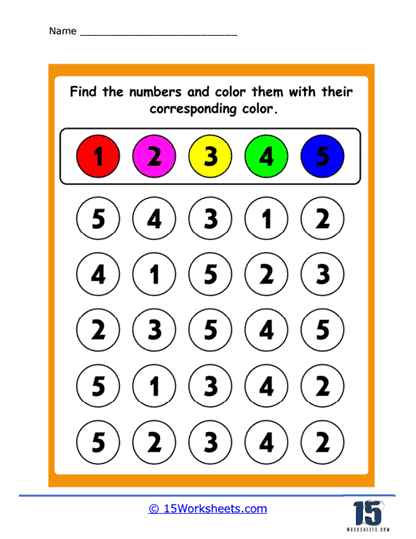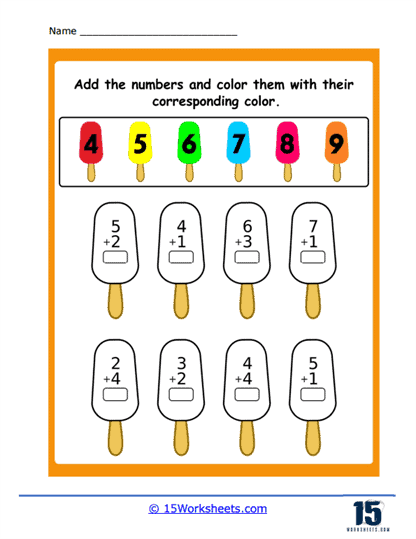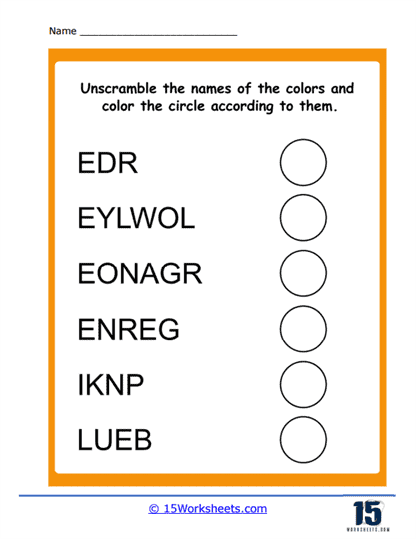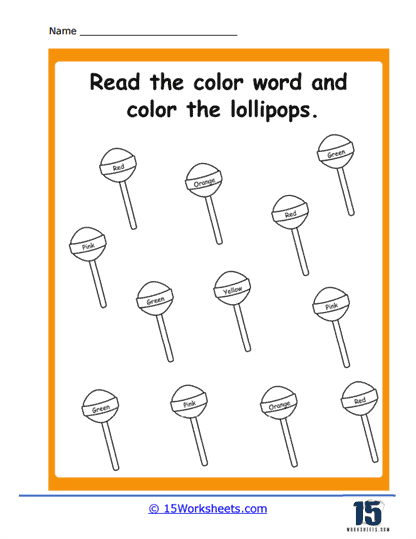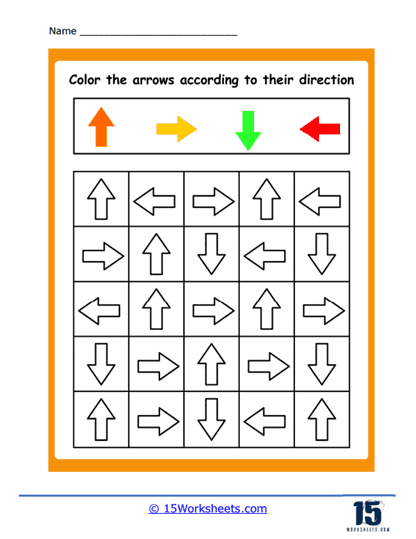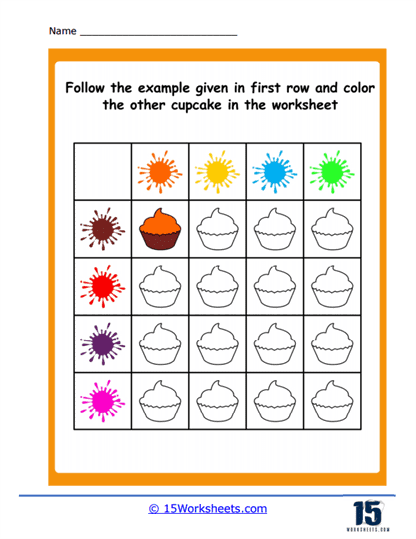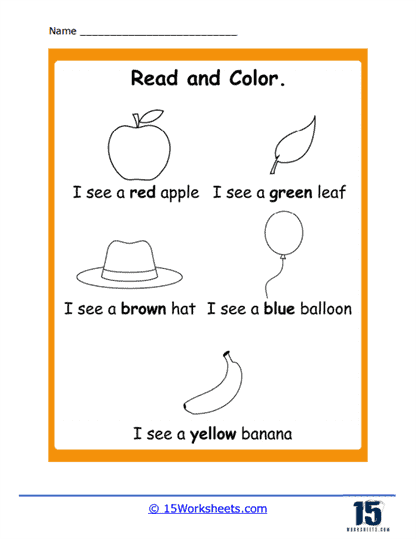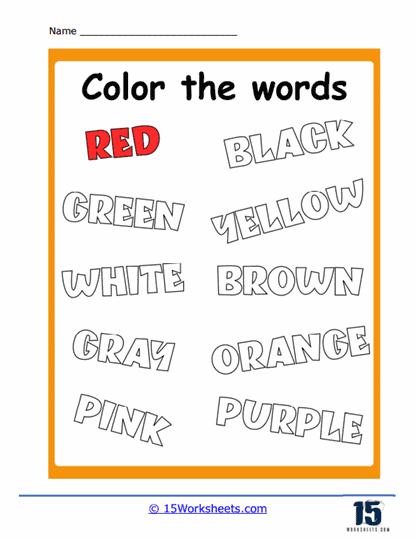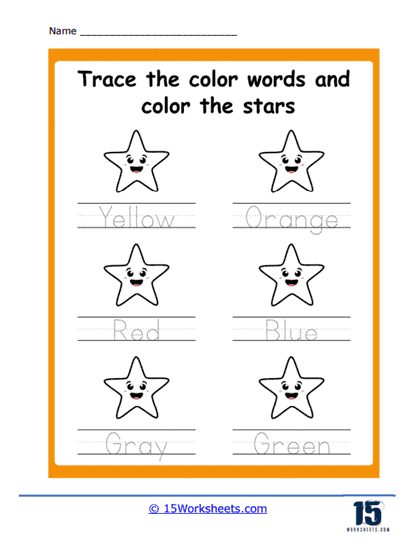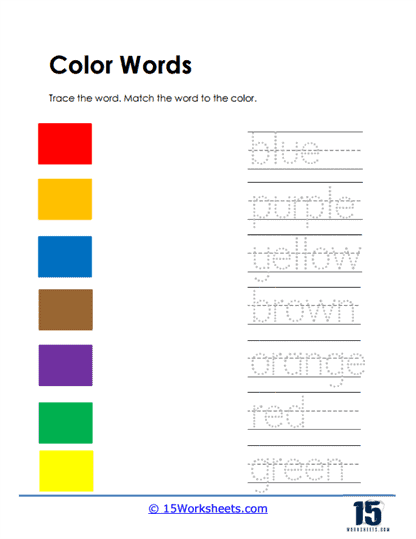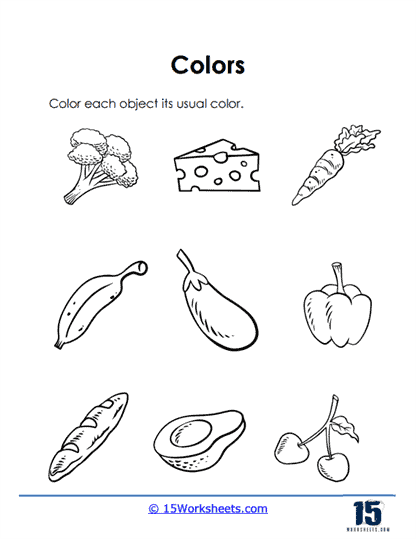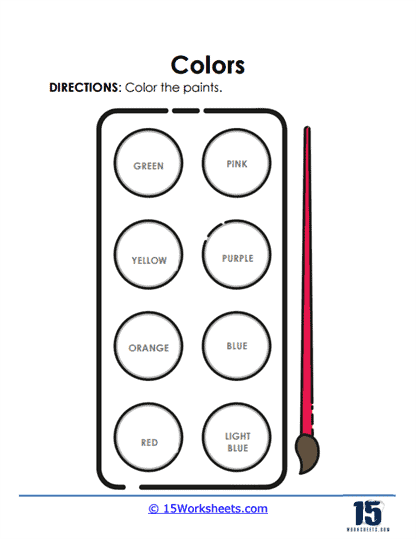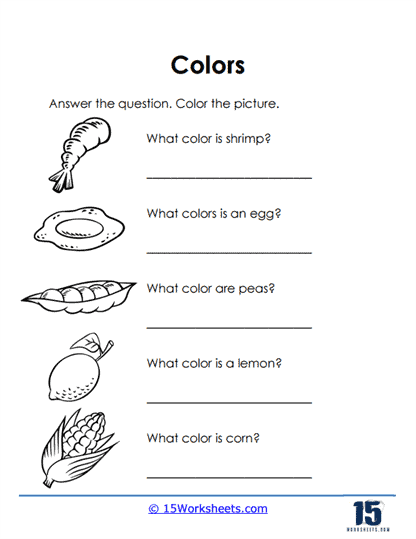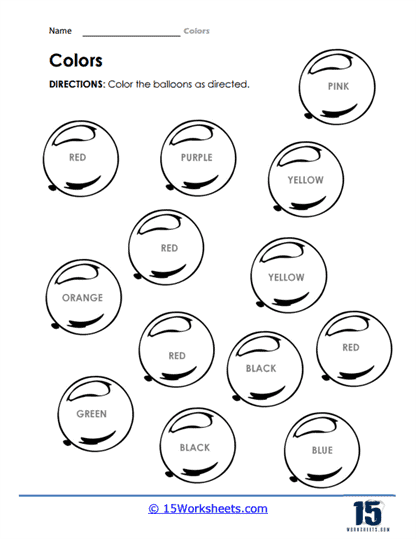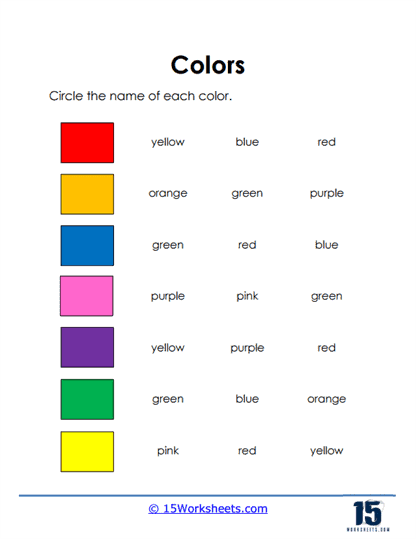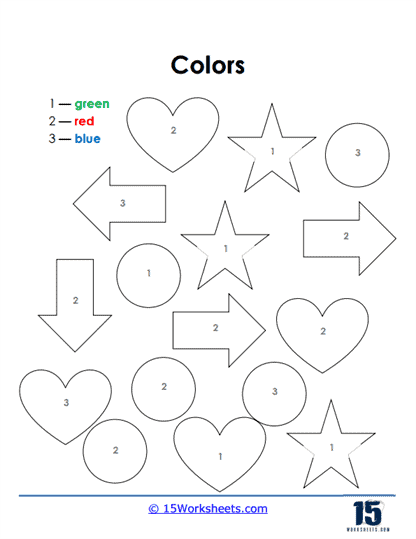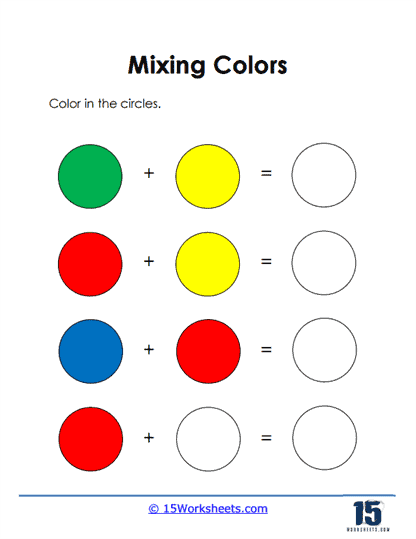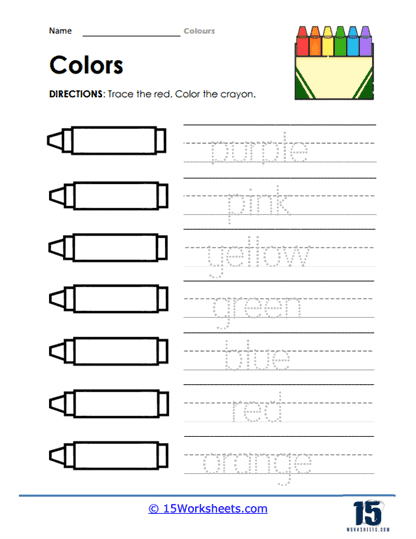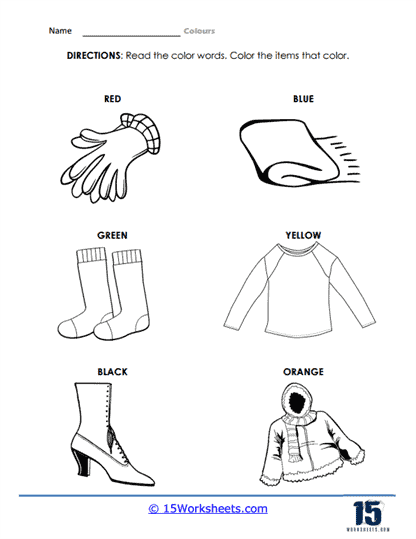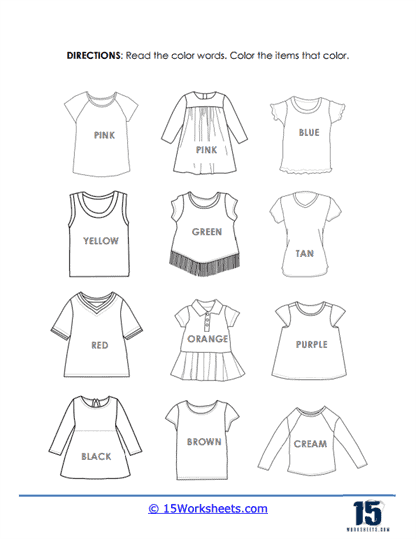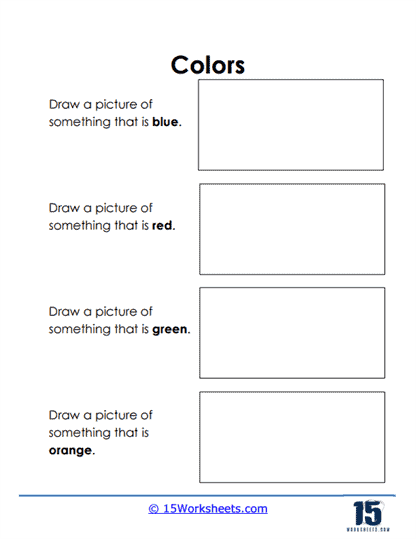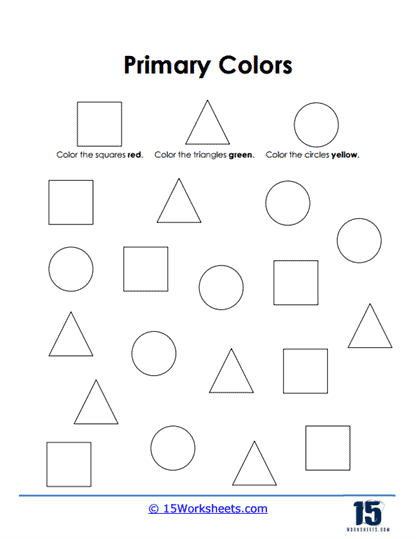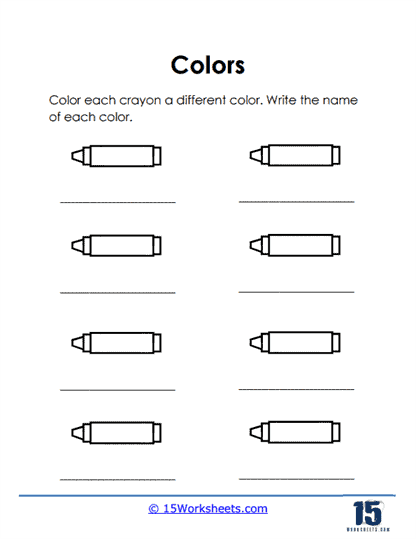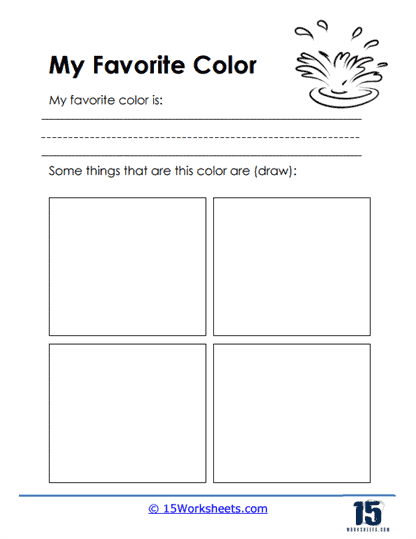Color Words Worksheets
All About These Worksheets
Embark on a vibrant and enriching journey into the fascinating world of colors with this comprehensive collection of Kindergarten worksheets. Carefully designed to introduce young learners to the names, characteristics, and wonders of different colors, this series serves as an invaluable tool in fostering essential skills such as color recognition, vocabulary expansion, language development, and even basic arithmetic. More than just an academic exercise, these worksheets transform learning into a lively and engaging adventure that captures the imagination of every child.
Imagine the thrill of a child discovering that the blue of the sky and the green of the grass are not just shades they see but names they can say, words they can read, and colors they can describe. The ability to recognize and express colors is a fundamental building block for young learners. In this series of worksheets, children are gently guided through a series of dynamic and interactive exercises that unlock this skill in a way that is both fun and meaningful.
Through hands-on activities, students will not only explore individual colors but will also dive into the vibrant world of color words. These exercises are intentionally crafted to engage students in ways that stimulate their curiosity and creativity. Whether they are coloring, drawing, tracing, or matching, each activity is an opportunity to deepen their understanding of colors and their associated words. In total, the collection includes 15 introductory worksheets on colors and an additional 15 worksheets that extend learning through more advanced activities. Each worksheet is a stepping stone toward mastery, providing ample opportunities for students to practice, reflect, and improve their color recognition and vocabulary.
One of the highlights of this series is the range of activities that students will engage in. Take, for example, the coloring and drawing exercises, where students are asked to replicate colors they observe. These tasks are more than just about filling in shapes with crayons. They encourage students to hone their attention to detail, improve their pattern recognition, and engage in a tactile, visual experience that sharpens their fine motor skills. The simple act of coloring becomes a bridge to understanding color theory, where students learn that combining colors can create entirely new shades, sparking their critical thinking and creativity.
But the learning doesn’t stop there. Counting and arithmetic exercises are seamlessly integrated into color recognition tasks, making math come alive in a way that feels approachable and engaging for young learners. Children are encouraged to showcase their knowledge of numbers while also reinforcing their understanding of colors, transforming what could be a rote activity into something interactive and exciting. Imagine a child counting colorful balloons or matching the number of red apples to a corresponding numeral-all while unknowingly building a strong foundation in both math and color vocabulary.
Vocabulary development is also a central focus of this series, with students engaging in activities such as unscrambling color words. These exercises not only reinforce word recognition but also encourage critical thinking and problem-solving as children work to arrange letters into meaningful words. Tracing activities, on the other hand, help students build both their fine motor skills and their familiarity with color words, making these terms second nature in their language repertoire. Each tracing exercise strengthens a child’s ability to write confidently, an essential skill that will serve them as they progress through their education.
One particularly engaging activity invites students to explore the world around them and identify the colors they see. Whether it’s the yellow of a daisy or the orange of a sunset, children are encouraged to connect their learning to the real world. This connection between the classroom and everyday life reinforces the relevance of color words and deepens a child’s understanding of the vibrant world around them. Additionally, by learning about color combinations, students are introduced to the basics of color theory-an exciting glimpse into how creativity and logic work hand in hand to shape our understanding of art and the world.
Creative expression is another cornerstone of this series. Children are invited to draw pictures using a variety of colors, allowing them to not only showcase their artistic abilities but also express their personal preferences and ideas. The act of choosing colors for their drawings strengthens decision-making skills and nurtures their growing confidence in self-expression. Talking about their favorite color becomes an opportunity to practice using color words in conversation, boosting their communication skills and self-esteem.
By the end of this series, students will have developed an impressive range of skills: they will be able to recognize colors and their names, express themselves using color words with confidence, and use their knowledge to describe the world around them. They will have sharpened their fine motor skills through tracing and coloring, enhanced their logical thinking through counting and arithmetic, and strengthened their creativity through drawing and coloring activities.
How to Teach Kids Color Words
Teaching children color words is not only an important early learning milestone, but it can also be an immensely fun and interactive experience that opens up a world of discovery for young minds. The process of learning colors goes far beyond simple vocabulary acquisition-it provides a foundation for cognitive development, creativity, and sensory awareness. By weaving together a series of carefully thought-out activities, interactive learning tools, and immersive experiences, children can not only recognize colors but also associate them with emotions, objects, and the world around them. Here’s how you can take the journey of teaching color words to new heights, creating lasting impressions along the way.
Start with Exploration and Curiosity
The journey to learning color words should begin with a child’s natural curiosity. At a young age, children are highly observant, constantly taking in the world around them. Introduce colors in a way that captures this wonder by engaging their senses. Begin by showing them common objects in their environment-fruits, toys, clothing, or even plants-and saying the color words out loud as they explore each item. Imagine the excitement when a child associates the red of an apple or the blue of the sky with its proper name. This creates a sense of discovery that goes beyond rote memorization. Children will begin to realize that colors are not abstract concepts but vibrant aspects of their everyday lives.
You can make this introduction even more immersive by pairing color words with interactive media. Flashcards are a tried-and-true method, but why stop there? Incorporate educational videos or songs that are rich in visual stimuli. Children’s songs about colors, with their catchy tunes and repetitive lyrics, provide an auditory reinforcement that helps solidify the connection between the color and its name. Visuals combined with sounds provide a dual-sensory experience, reinforcing their learning in a fun and memorable way.
Reading as an Interactive Experience
Reading books centered on colors is another highly effective tool, but it’s essential to move beyond passive reading. While stories like Brown Bear, Brown Bear, What Do You See? by Bill Martin Jr. or Pete the Cat: I Love My White Shoes by Eric Litwin are filled with vibrant color words, the key to deeper learning lies in interaction. As you read, pause frequently. Ask questions like, “What color is the bear?” or “What color shoes is Pete wearing now?” This simple engagement transforms reading into an active learning process, where children are not just listening but participating.
Books with illustrations that feature different colors can also serve as visual cues, prompting children to point out the colors they recognize. Encourage them to repeat the color words after you. Not only does this reinforce their understanding, but it also fosters a sense of achievement as they correctly identify the colors. Over time, children will become more confident in recognizing color words within the context of stories, and their reading comprehension will improve alongside their vocabulary.
Art as a Gateway to Color Mastery
One of the most impactful ways to teach color words is through hands-on creative expression. Art projects provide the perfect platform for children to experiment with colors while simultaneously learning their names. When children use colors intentionally-whether by painting, drawing, or creating collages-they strengthen their understanding of each color’s unique qualities.
For example, try creating a collage project focused on a single color. Provide children with cut-out images from magazines, fabric scraps, or colored paper, all in varying shades of a chosen color like red or yellow. As they piece together their collage, ask them to describe the color aloud. You might say, “Wow, look at all those different shades of red! Can you name something else that’s red?” This gives children the opportunity to interact with the color on a deeper level, cementing their understanding while boosting their creativity.
Similarly, painting projects that focus on a specific color palette can be a playful yet effective method for reinforcing color words. Have children paint a picture using only different shades of blue, for example, and encourage them to experiment with how the colors interact on the page. As they mix lighter and darker shades, they’ll begin to understand that colors have range and nuance, all while expanding their color vocabulary.
Learning Through Play
Play is a child’s primary language, and games provide the perfect avenue for reinforcing color words. Incorporating color-themed games such as color bingo or “I Spy” engages children in a way that feels less like learning and more like fun. Color bingo, for example, allows children to match colored squares with the corresponding word, while I Spy encourages them to identify colors in their environment, helping solidify their association with real-world objects.
Memory games are also particularly effective. By pairing color swatches or images with written color words, children are not only memorizing the visual cues, but also becoming familiar with the written representation of those colors. These games are not only interactive but can be adapted for group play, fostering social skills and collaboration, all while reinforcing the learning of color words in a lively, stimulating way.
Labeling and Real-World Associations
To further reinforce their learning, it’s helpful to immerse children in a color-rich environment. Label items around the home or classroom with their corresponding color words. For instance, you could place labels on the red chair, the yellow table, or the green door. By constantly seeing and associating these labels with everyday objects, children begin to develop an intuitive recognition of both the color and its written word. The more they see and hear the words, the more naturally they will integrate them into their vocabulary.
Another real-world activity is sorting colored manipulatives, such as blocks or beads. As children group these items by color, ask them to say the color words aloud. This kind of tactile learning helps solidify the connection between the word and the color, as they are physically interacting with objects that represent those colors.
Writing and Reinforcement
As children become more comfortable with color words, encourage them to write these words themselves. Begin with tracing exercises that help familiarize them with the shape and structure of each word. Over time, they can progress to writing the words independently. You might design simple worksheets with color words or encourage children to label their own artwork with the appropriate colors. This practice not only reinforces spelling but also helps children feel a sense of ownership over their learning.
For a more advanced challenge, consider themed days where the focus is on a particular color. On “Red Day,” for instance, children might wear red clothes, bring red objects to class, or participate in red-themed activities. The entire day becomes a celebration of the color, making the learning experience unforgettable.
The Role of Repetition and Encouragement
Consistency and patience are key. Children learn at their own pace, and repetition is essential for their success. Incorporating color words into everyday conversations ensures that the learning process continues outside structured activities. For example, when setting the table, ask, “Can you hand me the blue cup?” or when dressing, say, “Let’s put on your green socks today.” These small moments of repetition in real-life situations help reinforce color words in a natural, stress-free manner.
It’s important to recognize that each child may take different amounts of time to master color words, and that’s perfectly okay. Be patient, offer plenty of encouragement, and celebrate their progress. Positive reinforcement goes a long way in making the learning process enjoyable and boosting their confidence.

